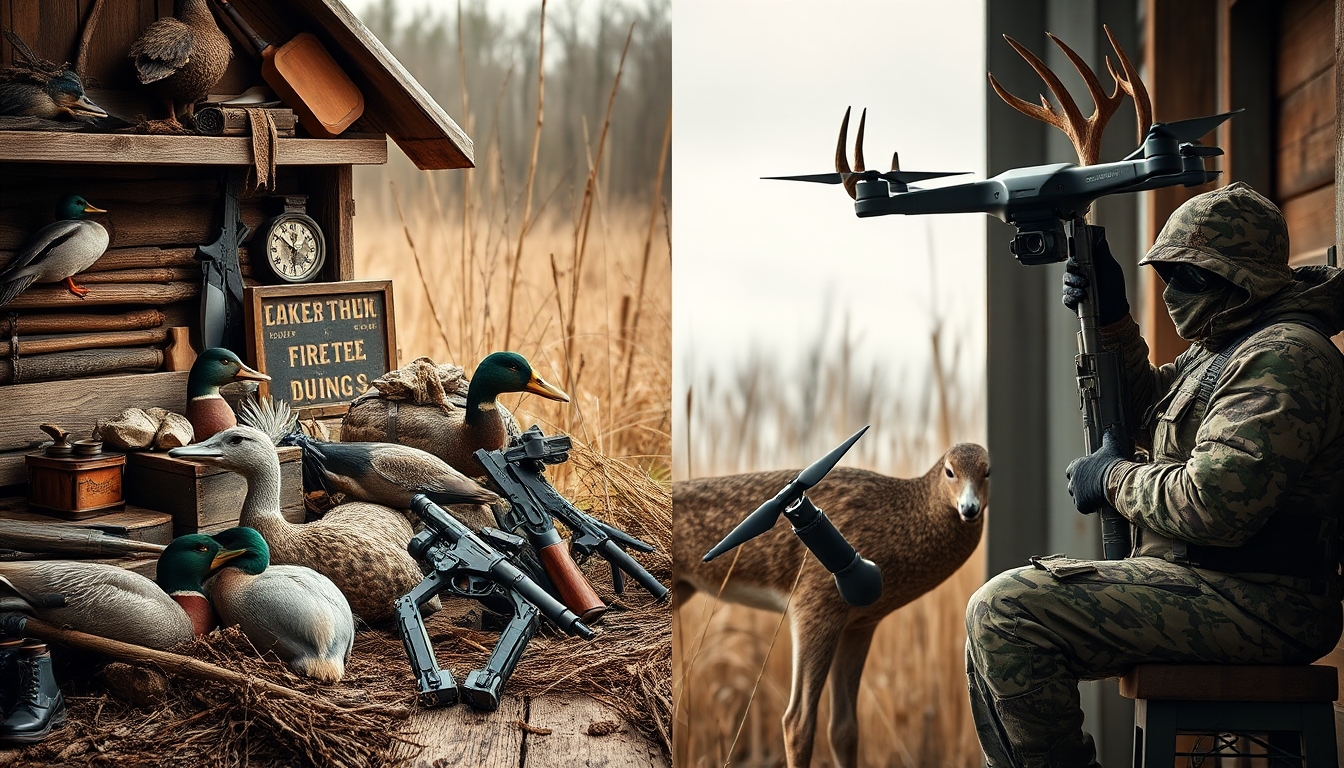The Evolution of Hunting Gear: From Traditional to Tech-Driven Approaches in Waterfowl and Whitetail Deer Hunting
Hunting has a rich history that stretches back thousands of years, and the gear used in this age-old practice has evolved dramatically over time. From primitive tools used by our ancestors to today’s advanced technology-driven equipment, the evolution of hunting gear reflects changes in both society and technology. This transformation is particularly evident in waterfowl and whitetail deer hunting, where traditional methods have given way to innovative solutions that enhance efficiency, effectiveness, and overall enjoyment in the field.
1. Traditional Hunting Gear: A Look Back
Historically, hunters relied on simple tools crafted from natural materials. Early hunters used handmade bows and arrows, spears, and basic traps to catch game. Waterfowl hunters utilized wooden decoys and natural camouflage, while deer hunters employed natural materials for blinds and clothing. This traditional gear was effective, but it required significant skill and knowledge of the environment.
As hunting practices evolved, so did the materials and manufacturing techniques. The introduction of synthetic materials led to the development of lighter and more durable gear. Camouflage patterns became more sophisticated, improving concealment for hunters in various environments. The emergence of firearms further changed hunting, allowing for greater range and efficiency.
2. The Rise of Modern Technology
With the advent of technology, hunting gear began to incorporate advanced features and capabilities. Modern waterfowl hunters now have access to high-performance shotguns, which are lighter and more efficient, along with non-toxic ammunition that is environmentally friendly. Additionally, the development of specialized waterfowl calls and electronic decoys allows hunters to attract birds more effectively than ever before.
In whitetail deer hunting, technology has made significant strides in equipment design and functionality. Tree stands, ground blinds, and clothing are now built with advanced materials that enhance comfort and concealment. For instance, breathable fabrics and moisture-wicking technologies keep hunters comfortable during long hours in the field. Furthermore, scent control technologies help minimize human odors, increasing the chances of successful encounters with deer.
3. Smart Gadgets and App Integration
The most notable change in hunting gear has come with the integration of smart technology. Today’s hunters benefit from a variety of gadgets designed to enhance their experience. For waterfowl hunters, smart scouting cameras can monitor feeding patterns and migration routes, providing valuable insights before heading out into the field. GPS devices and smartphone apps allow hunters to map out their hunting areas, track their movements, and communicate with other hunters in real time.
For whitetail deer hunting, advancements like mobile apps provide hunters with weather updates, moon phases, and deer movement predictions. These tools allow hunters to make informed decisions about when and where to hunt. Additionally, smart game calls can be controlled via Bluetooth, allowing for more realistic and varied sounds to attract deer and waterfowl.
4. Safety and Communication Advancements
Safety in hunting has also improved dramatically due to technological advancements. Two-way radios and satellite communication devices provide hunters with ways to communicate over long distances, ensuring that they can maintain contact with others in their group. GPS tracking devices can be lifesaving, especially in remote areas, helping hunters navigate and find their way back to safety.
5. The Future of Hunting Gear
As technology continues to advance, the future of hunting gear is likely to see even more innovation. We can expect to see enhancements in areas such as augmented reality, allowing hunters to overlay important data onto their field of vision. The use of drones for scouting is also gaining traction, providing a bird’s-eye view of hunting areas that was previously unattainable.
Furthermore, the focus on sustainability and eco-friendly materials will likely shape the development of future hunting gear, ensuring that hunters can pursue their passions while also protecting the environment.
Conclusion
The evolution of hunting gear from traditional tools to tech-driven approaches has transformed the way hunters engage with their environment. Waterfowl and whitetail deer hunters now have access to a wealth of advanced equipment that enhances their abilities, improves their chances of success, and contributes to a more enjoyable hunting experience. As we move forward, embracing these technological advancements while respecting the traditions of the past will continue to shape the future of hunting for generations to come.

